Papers by Sofia Lindström Sol
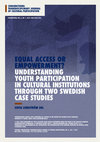
Conjunctions. Transdisciplinary Journal of Cultural Participation
The concept of cultural participation is seldom defined in policy but carries a positive connotat... more The concept of cultural participation is seldom defined in policy but carries a positive connotation. The aim of this article is to understand how participation is made meaningful by policy stakeholders, exemplified by a Swedish municipality, with special attention directed towards two cultural institutions working to enhance young people’s participation. The analysis considered levels of interest in participation, from the policy level, managerial level and civil servant level. The analysis found the meaning of participation shifted from a focus on equal access to empowering young people as a marginalised group, mirroring theories of a shift from a cultural democratisation paradigm to a cultural democracy paradigm in cultural policy. The civil servants shared an understanding that it is possible to distribute power from adults to young people, but the overlap of the two paradigms in the goal of achieving participation resulted in tensions and paradoxes regarding the issue of negoti...
I denna text vill vi lyfta betydelsen av partner och familj för en
konstnärlig karriär. Vi vill d... more I denna text vill vi lyfta betydelsen av partner och familj för en
konstnärlig karriär. Vi vill diskutera hur heteronormativa tvåsamhetsideal
kan förstås i relation till idéer om konstnärlig frihet, konstnärligt
skapande och föreställningar om konstnärlig genialitet (som manligt
kodade). Genom att redogöra för kunskap om och forskning kring
konsten som yrke, samt konstnärers egna gestaltningar av den heterosexuella parrelationen, vill vi lyfta fram betydelsen av parrelationen
och den könskodade ansvarsfördelningen i hemmet i kontexten konstnärliga (genus)villkor.
Anthology by Sofia Lindström Sol
Kulturaliseringens samhälle Problemorienterad kulturvetenskaplig forskning vid Tema Q 2002–2012 Red. Svante Beckman
Conference Presentations by Sofia Lindström Sol
Paper presenterat vid seminariet Inte konst? Det är väl ingen konst? Norrköping 30/10 2012 Introd... more Paper presenterat vid seminariet Inte konst? Det är väl ingen konst? Norrköping 30/10 2012 Introduktion Den senaste tiden har etnicitet, rasifierade stereotyper och representation inom kulturens uttryck varit mycket uppmärksammade i media. Exempel är Makode Lindes skrikande tårta och kulturministern, kritiken mot barnfilmen Liten skär och alla små brokiga, diskussionen efter filmen
Utvärdering by Sofia Lindström Sol
Text by Sofia Lindström Sol
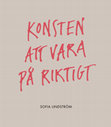
Våren 2009 utförde jag en utvärdering av projektet Ung & Skapande på Röda Sten konsthall i Götebo... more Våren 2009 utförde jag en utvärdering av projektet Ung & Skapande på Röda Sten konsthall i Göteborg. Projektet
var ett samarbete mellan Ung Kultur 116, en dialogbaserad grupp inom Göteborgs Stad som arbetade
med unga och klotter/graffitifrågan, samt Röda Sten konsthall. Utifrån ett explorativt perspektiv
med fokus på
de deltagande unga sökte jag svar på vad som hade varit framgångarna och de eventuella baksidorna med projektet.
Resultatet presenterades i publikationen Utvärdering av Ung & Skapande – ett socialt och konstpedagogiskt
projekt i samarbete mellan Röda Sten och Ung Kultur 116 (Lindström, 2010).
Projektets syften handlade mycket om bristen på en plats för unga med möjligheter att mötas och utöva ett
intresse för konstnärliga och visuella uttrycksformer1. Det behövdes därför en plats för unga att agera utifrån
och därigenom få en möjlighet att finna synlighet och aktörsskap i ett samhälle man önskar påverka eller ställa
krav på. Men vad innebär det att skapa en plats där unga får mötas och utöva olika konstnärliga aktiviteter? Att
starta projekt med unga innebär ofta förväntningar och föreställningar som kan komma att bli förändrade eller
bekräftade.
Syftet med denna text är att med Ung & Skapande som exempel föra en vidare diskussion kring barns och
ungas rättigheter och möjligheter till att ta del av kulturella uttryck och att utveckla sina intressen. Förhoppningen
med denna text är att nå ut till dem som vill jobba tillsammans med unga och omsätta liknande idéer i
praktiken. Genom de lärdomar som kunde dras genom detta projekt kan förhoppningsvis andra inom sina
egna ramar undvika vissa omständigheter som kan stjälpa eller försvåra ett arbete som syftar att vara av och
med unga – samt inspireras av det som fungerade. Ännu är kunskapen om promotionerade aktiviteter för unga
– det vill säga aktiviteter som betonar främjande av den positiva utvecklingen – relativt outforskade i Sverige
idag (Andersson & Jordan, 2007). Denna text vill alltså se vad man lärde sig från detta exempel och diskutera det
utifrån ett vidare perspektiv – på vilka sätt kan erfarenheterna från Ung & Skapande användas som exempel
inom olika kontexter? Vilken plats har en diskussion kring ungas rättigheter till och behov av kulturella
uttryck i det politiska landskapet idag?
Texten handlar också om hur vuxna kan reflektera över sin betydelse för ungas möjligheter att tillgodose
sig sina kulturella intressen – den är därför ett inlägg i en diskussion kring hur vuxna kan förhålla sig och bete
sig i frågor om ungas kultur.
Article by Sofia Lindström Sol

International Journal of Cultural Policy, 2019
The role of sport and cultural practices in policy initiatives tends to be assessed in both cases... more The role of sport and cultural practices in policy initiatives tends to be assessed in both cases in terms of their assumed social benefits. However, the areas of sport and culture are often understood separately in research. Through an analysis of interviews with key local policy-makers and civil servants in two Swedish municipalities, the aim of this article is to explore how sport and culture are formed as means to promote social policy objectives regarding young people. In addition, we reflect on the political significance of this in relation to the development of local policy. The analysis demonstrates how a discourse of urban segregation and unequal opportunities underpins actions to mobilise non-participant and at-risk youth. This is achieved by establishing centres for sport and culture, and by enabling an educational approach which focuses on participation, empowerment and good citizenship. Reasons for mobilising practices involving culture and sport overlap, though each area of policy appears to be differently underpinned by discourses of enlightenment and conformity. Differences in emphasis between the discourses on sport and culture are discussed in relation to scientific discourse on the social utility of each policy area. ARTICLE HISTORY
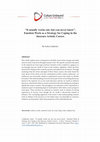
This article explores how contemporary Swedish visual artists manage and make sense of career ins... more This article explores how contemporary Swedish visual artists manage and make sense of career insecurity through emotion work. The specific emotions discussed in the material are trust, hope and luck. Emotion work is related to coping in an increasingly insecure world of work in late modern capitalism, which has been theorized as relying on the creativity, passion and subjectivity of workers. Through analysing what the artists anticipate of their future careers, the study found the main desire of the artists to be the continuation of their creative endeavour—an endeavour not necessarily related to professional success but rather to identity formation. This understanding of success forms part of two overarching discourses found in the material: art as non-work discourse and the art world as arbitrary discourse, which both relate to certain emotional work when failing/succeeding to uphold the artistic creation. The prestigious arts education of the respondents is analysed as part of sustaining hope of continuation when future career prospects seem grim. Trust and luck are analysed as emotion work in relation to having experiences of success, even though the art world is discursively framed as arbitrary. The concluding argument of the article is that understanding emotion work in relation to the insecure or even failed career can shed light on resources related to social position rather than properties of the individual psyche.

Artists are known to manage low income and work insecurity by holding multiple jobs. Through an a... more Artists are known to manage low income and work insecurity by holding multiple jobs. Through an analysis of interview data, this study explores the narratives of 20 visual artists in Sweden regarding breadwinning work. Positive and negative experiences of such work are analyzed in relation to the artists' work behavior and identity as either 'bohemian' or 'entrepreneurial. ' Breadwinning work may be seen by artists as either enabling autonomy from the market or hindering the construction of a professional identity, depending on these behaviors/identities. However, conditions such as low wage, temporary contracts, and low control over work hours ultimately decides artist's experiences of breadwinning work. This article adds to the existing knowledge on artistic labour markets by highlighting the role of multiple job holding in mediating between an understanding of the bohemian art for art's sake artist role and the entrepreneurial role of the artist.
Higher education can function as an important marker of seriousness in fields characterized by di... more Higher education can function as an important marker of seriousness in fields characterized by diffuse professional standards. Using the case of a fine arts institute, the article outlines the role of higher education in promoting the interconnection of a professional and individual subjectivity; being an artist is not merely something one does but something one is. By primarily examining interview material, it explores how an ideal position of individual self-reliance relates to the alumni of the institute. Some respondents were not “in sync” with this position and needed to seek out other resources in order to construct themselves as professional artists. However, they seldom rejected the kind of subjectivity promoted by their education, but rather renegotiated it as part of the uncertainty of their chosen field.
Drafts by Sofia Lindström Sol
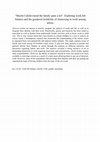
Artists are known to heavily integrate the spheres of work and life as well as to integrate their... more Artists are known to heavily integrate the spheres of work and life as well as to integrate their identity with their work. Historically, genius and creativity has been coded as masculine as well as distinct from traditionally female activities such as house work or child care. This is why women artists have been known to remain childless as a way to achieve an artistic career. Contemporary research has found that this understanding of the artistic career as separated from conventional life still informs artistic identity. This study explores issues of family and work among 20 Swedish visual artists. It asks how their position as parents and partners inform their identity as artists through the analysis of different narratives and discourses regarding family and work. The analysis revealed a strong narrative of art as demanding immersion in work requiring long hours and concentration, which clashes against other responsibilities. However, the ability to immerse oneself in work was found to be more available to men than women as a result of a male norm allowing them to opt out of domestic work. However, some of the respondents did not merge their identity with their art making but separated the logic of having children from the logic of the art world.
Thesis Chapters by Sofia Lindström Sol

The aim of this dissertation is to explore and understand three important social contexts for
the... more The aim of this dissertation is to explore and understand three important social contexts for
the construction of an artistic subjectivity: education, work and family life. The empirical data
consist of interview material with alumni from the Royal Institute of Art in Stockholm, staff
of the institute, and a survey material from the Swedish National Artist’s Organization
(KRO/KIF). Generally, the thesis employs a theory of conflicting understandings of labour as
well as the importance of discourses and narratives for the formation of subjects. The
contribution of the thesis is the analysis of a continuing conflict between being and working
as an artist actualized in the social contexts explored. The arts education encouraged a
romanticized understanding of art as unrelated to market value, which clashed against societal
norms of career progression, survival and supporting a family. This conflict informed the
subjective way in which the respondents relate to their activities as artists, workers and
relatives. The concept of freedom can be understood as mediating this conflict in the sense of
forming the basis of attraction to the arts but also a burden as it relates to insecurity. The
analysis found several subjective representations of the artist that indicate strong norms of
individuality and self-direction, understood as the outcome of a working life fraught with
personal responsibility for coping with insecurity. As such, the thesis is part of ongoing
research on changes in working life towards non-standard and sometimes precarious working
conditions.
Book Reviews by Sofia Lindström Sol
Review of Angela McRobbie's 2017 book Be creative: making a living in the new culture industries,... more Review of Angela McRobbie's 2017 book Be creative: making a living in the new culture industries, International Journal of Cultural Policy, 23:5, 652-654, DOI: 10.1080/10286632.2017.1330334

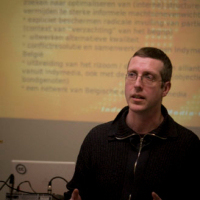



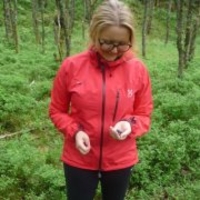

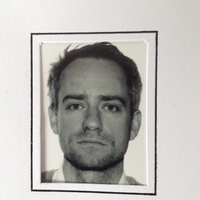


Uploads
Papers by Sofia Lindström Sol
konstnärlig karriär. Vi vill diskutera hur heteronormativa tvåsamhetsideal
kan förstås i relation till idéer om konstnärlig frihet, konstnärligt
skapande och föreställningar om konstnärlig genialitet (som manligt
kodade). Genom att redogöra för kunskap om och forskning kring
konsten som yrke, samt konstnärers egna gestaltningar av den heterosexuella parrelationen, vill vi lyfta fram betydelsen av parrelationen
och den könskodade ansvarsfördelningen i hemmet i kontexten konstnärliga (genus)villkor.
Anthology by Sofia Lindström Sol
Conference Presentations by Sofia Lindström Sol
Utvärdering by Sofia Lindström Sol
Text by Sofia Lindström Sol
var ett samarbete mellan Ung Kultur 116, en dialogbaserad grupp inom Göteborgs Stad som arbetade
med unga och klotter/graffitifrågan, samt Röda Sten konsthall. Utifrån ett explorativt perspektiv
med fokus på
de deltagande unga sökte jag svar på vad som hade varit framgångarna och de eventuella baksidorna med projektet.
Resultatet presenterades i publikationen Utvärdering av Ung & Skapande – ett socialt och konstpedagogiskt
projekt i samarbete mellan Röda Sten och Ung Kultur 116 (Lindström, 2010).
Projektets syften handlade mycket om bristen på en plats för unga med möjligheter att mötas och utöva ett
intresse för konstnärliga och visuella uttrycksformer1. Det behövdes därför en plats för unga att agera utifrån
och därigenom få en möjlighet att finna synlighet och aktörsskap i ett samhälle man önskar påverka eller ställa
krav på. Men vad innebär det att skapa en plats där unga får mötas och utöva olika konstnärliga aktiviteter? Att
starta projekt med unga innebär ofta förväntningar och föreställningar som kan komma att bli förändrade eller
bekräftade.
Syftet med denna text är att med Ung & Skapande som exempel föra en vidare diskussion kring barns och
ungas rättigheter och möjligheter till att ta del av kulturella uttryck och att utveckla sina intressen. Förhoppningen
med denna text är att nå ut till dem som vill jobba tillsammans med unga och omsätta liknande idéer i
praktiken. Genom de lärdomar som kunde dras genom detta projekt kan förhoppningsvis andra inom sina
egna ramar undvika vissa omständigheter som kan stjälpa eller försvåra ett arbete som syftar att vara av och
med unga – samt inspireras av det som fungerade. Ännu är kunskapen om promotionerade aktiviteter för unga
– det vill säga aktiviteter som betonar främjande av den positiva utvecklingen – relativt outforskade i Sverige
idag (Andersson & Jordan, 2007). Denna text vill alltså se vad man lärde sig från detta exempel och diskutera det
utifrån ett vidare perspektiv – på vilka sätt kan erfarenheterna från Ung & Skapande användas som exempel
inom olika kontexter? Vilken plats har en diskussion kring ungas rättigheter till och behov av kulturella
uttryck i det politiska landskapet idag?
Texten handlar också om hur vuxna kan reflektera över sin betydelse för ungas möjligheter att tillgodose
sig sina kulturella intressen – den är därför ett inlägg i en diskussion kring hur vuxna kan förhålla sig och bete
sig i frågor om ungas kultur.
Article by Sofia Lindström Sol
Drafts by Sofia Lindström Sol
Thesis Chapters by Sofia Lindström Sol
the construction of an artistic subjectivity: education, work and family life. The empirical data
consist of interview material with alumni from the Royal Institute of Art in Stockholm, staff
of the institute, and a survey material from the Swedish National Artist’s Organization
(KRO/KIF). Generally, the thesis employs a theory of conflicting understandings of labour as
well as the importance of discourses and narratives for the formation of subjects. The
contribution of the thesis is the analysis of a continuing conflict between being and working
as an artist actualized in the social contexts explored. The arts education encouraged a
romanticized understanding of art as unrelated to market value, which clashed against societal
norms of career progression, survival and supporting a family. This conflict informed the
subjective way in which the respondents relate to their activities as artists, workers and
relatives. The concept of freedom can be understood as mediating this conflict in the sense of
forming the basis of attraction to the arts but also a burden as it relates to insecurity. The
analysis found several subjective representations of the artist that indicate strong norms of
individuality and self-direction, understood as the outcome of a working life fraught with
personal responsibility for coping with insecurity. As such, the thesis is part of ongoing
research on changes in working life towards non-standard and sometimes precarious working
conditions.
Book Reviews by Sofia Lindström Sol
konstnärlig karriär. Vi vill diskutera hur heteronormativa tvåsamhetsideal
kan förstås i relation till idéer om konstnärlig frihet, konstnärligt
skapande och föreställningar om konstnärlig genialitet (som manligt
kodade). Genom att redogöra för kunskap om och forskning kring
konsten som yrke, samt konstnärers egna gestaltningar av den heterosexuella parrelationen, vill vi lyfta fram betydelsen av parrelationen
och den könskodade ansvarsfördelningen i hemmet i kontexten konstnärliga (genus)villkor.
var ett samarbete mellan Ung Kultur 116, en dialogbaserad grupp inom Göteborgs Stad som arbetade
med unga och klotter/graffitifrågan, samt Röda Sten konsthall. Utifrån ett explorativt perspektiv
med fokus på
de deltagande unga sökte jag svar på vad som hade varit framgångarna och de eventuella baksidorna med projektet.
Resultatet presenterades i publikationen Utvärdering av Ung & Skapande – ett socialt och konstpedagogiskt
projekt i samarbete mellan Röda Sten och Ung Kultur 116 (Lindström, 2010).
Projektets syften handlade mycket om bristen på en plats för unga med möjligheter att mötas och utöva ett
intresse för konstnärliga och visuella uttrycksformer1. Det behövdes därför en plats för unga att agera utifrån
och därigenom få en möjlighet att finna synlighet och aktörsskap i ett samhälle man önskar påverka eller ställa
krav på. Men vad innebär det att skapa en plats där unga får mötas och utöva olika konstnärliga aktiviteter? Att
starta projekt med unga innebär ofta förväntningar och föreställningar som kan komma att bli förändrade eller
bekräftade.
Syftet med denna text är att med Ung & Skapande som exempel föra en vidare diskussion kring barns och
ungas rättigheter och möjligheter till att ta del av kulturella uttryck och att utveckla sina intressen. Förhoppningen
med denna text är att nå ut till dem som vill jobba tillsammans med unga och omsätta liknande idéer i
praktiken. Genom de lärdomar som kunde dras genom detta projekt kan förhoppningsvis andra inom sina
egna ramar undvika vissa omständigheter som kan stjälpa eller försvåra ett arbete som syftar att vara av och
med unga – samt inspireras av det som fungerade. Ännu är kunskapen om promotionerade aktiviteter för unga
– det vill säga aktiviteter som betonar främjande av den positiva utvecklingen – relativt outforskade i Sverige
idag (Andersson & Jordan, 2007). Denna text vill alltså se vad man lärde sig från detta exempel och diskutera det
utifrån ett vidare perspektiv – på vilka sätt kan erfarenheterna från Ung & Skapande användas som exempel
inom olika kontexter? Vilken plats har en diskussion kring ungas rättigheter till och behov av kulturella
uttryck i det politiska landskapet idag?
Texten handlar också om hur vuxna kan reflektera över sin betydelse för ungas möjligheter att tillgodose
sig sina kulturella intressen – den är därför ett inlägg i en diskussion kring hur vuxna kan förhålla sig och bete
sig i frågor om ungas kultur.
the construction of an artistic subjectivity: education, work and family life. The empirical data
consist of interview material with alumni from the Royal Institute of Art in Stockholm, staff
of the institute, and a survey material from the Swedish National Artist’s Organization
(KRO/KIF). Generally, the thesis employs a theory of conflicting understandings of labour as
well as the importance of discourses and narratives for the formation of subjects. The
contribution of the thesis is the analysis of a continuing conflict between being and working
as an artist actualized in the social contexts explored. The arts education encouraged a
romanticized understanding of art as unrelated to market value, which clashed against societal
norms of career progression, survival and supporting a family. This conflict informed the
subjective way in which the respondents relate to their activities as artists, workers and
relatives. The concept of freedom can be understood as mediating this conflict in the sense of
forming the basis of attraction to the arts but also a burden as it relates to insecurity. The
analysis found several subjective representations of the artist that indicate strong norms of
individuality and self-direction, understood as the outcome of a working life fraught with
personal responsibility for coping with insecurity. As such, the thesis is part of ongoing
research on changes in working life towards non-standard and sometimes precarious working
conditions.